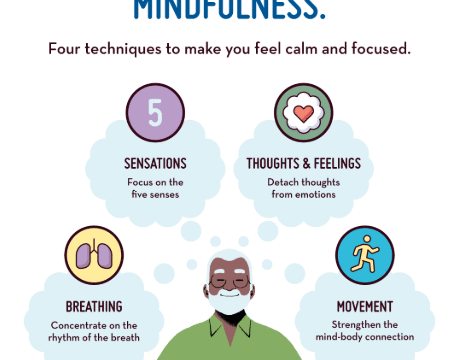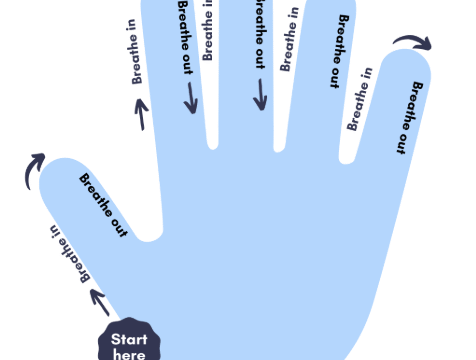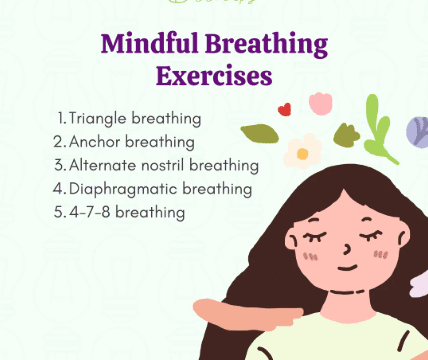In our modern, fast-paced world, it is common for the mind to feel crowded with thoughts. From endless to-do lists to worries about the future or reflections on the past, mental chatter can leave us feeling overwhelmed and restless. One of the most effective tools for calming the mind is conscious, or mindful, breathing. By intentionally focusing on each inhale and exhale, it is possible to quiet racing thoughts, restore emotional balance, and bring clarity to everyday life. Conscious breathing is simple, accessible, and can be practiced anywhere, making it an essential skill for anyone seeking mental calm and focus.
Conscious breathing is the practice of observing and regulating the breath intentionally. Unlike automatic breathing, which happens without attention, conscious breathing invites awareness of the rhythm, depth, and sensation of each breath. This simple act helps the mind shift away from distractions, worry, and repetitive thought patterns, providing a foundation for mental stillness. By returning attention to the breath whenever the mind wanders, individuals cultivate the ability to remain present and centered.
The first step to calming thoughts through conscious breathing is awareness. Begin by noticing the current state of the breath without attempting to change it. Observe whether it is shallow, rapid, or uneven, and pay attention to how it interacts with the body. This moment of recognition is not about judgment or analysis; it is about creating a space to pause and acknowledge what is happening internally. Simply noticing the breath provides a natural interruption to mental chatter and creates the opportunity for intentional calm.
Structured breathing techniques can further support mental clarity and calmness. One popular method is box breathing. This involves inhaling for four counts, holding for four, exhaling for four, and pausing for four before repeating the cycle. The steady, predictable rhythm provides a focal point for the mind, which can help quiet anxious thoughts and foster relaxation. Practicing box breathing for even a few minutes creates a sense of stability and centeredness, which extends beyond the session.
Another highly effective technique is the 4-7-8 breathing method. Inhaling gently through the nose for four counts, holding for seven, and exhaling slowly for eight counts activates the parasympathetic nervous system. This response signals the body to relax and promotes a calmer state of mind. Over time, regular practice of the 4-7-8 method reduces mental clutter, improves focus, and encourages a more reflective and deliberate approach to challenges.
Conscious breathing can be combined with visualization for deeper mental calm. While inhaling, imagine drawing in clarity, calm, or positive energy. While exhaling, visualize tension, stress, or scattered thoughts leaving the body. This pairing strengthens the mind-body connection and reinforces the calming effect of the breath. Visualization can also provide a gentle mental anchor, keeping the mind engaged in the present moment and away from worry or overthinking.
Integrating conscious breathing into daily life enhances its effectiveness. Morning sessions can help prepare the mind for the day, offering clarity and focus before activities begin. Midday breathing breaks provide an opportunity to reset, release accumulated stress, and maintain emotional balance. Evening sessions encourage relaxation, reflection, and preparation for restful sleep. By incorporating conscious breathing at key points throughout the day, it becomes a reliable tool for managing thoughts and maintaining mental calm consistently.
Even brief sessions of one to three minutes can be surprisingly effective. Taking a few conscious breaths before responding to an email, entering a meeting, or handling a stressful moment provides an instant opportunity to center the mind. These micro-practices remind the brain that calm and focus are accessible, even in busy or challenging situations. Over time, these small interventions accumulate, reinforcing a habit of returning to the breath whenever thoughts become overwhelming.
Conscious breathing also encourages self-compassion, which is essential for managing mental chatter. Recognizing that it is natural for the mind to wander or become busy allows for a gentler approach to thought management. Rather than judging oneself for distraction, simply returning attention to the breath fosters patience, understanding, and emotional resilience. This compassionate approach enhances the effectiveness of conscious breathing and strengthens long-term mental well-being.
Mindful awareness of the body complements conscious breathing. Paying attention to physical sensations during the practice—such as the rise and fall of the chest or the feeling of air entering the nostrils—anchors the mind and provides additional focus. Observing the body alongside the breath cultivates a holistic sense of presence, making it easier to calm mental chatter while also releasing tension held in muscles or posture. This mind-body connection reinforces the grounding effect of conscious breathing.
Consistency is key for developing lasting benefits. Practicing conscious breathing daily, even in short sessions, gradually trains the mind to respond to stress with calm and clarity. By establishing regular moments of focus on the breath, individuals strengthen their capacity to observe thoughts without becoming entangled in them. This ongoing practice builds resilience, reduces anxiety, and encourages a more peaceful, deliberate approach to daily life.
Flexible approaches ensure that conscious breathing is accessible anytime and anywhere. It can be practiced seated, standing, or even while walking. Some days may allow for longer sessions, while others may only provide a brief pause. The key is intentionality and presence rather than duration. By making conscious breathing a regular part of daily life, it becomes a natural strategy for calming the mind and managing thoughts in diverse situations.
The long-term benefits of conscious breathing extend beyond immediate relaxation. Regular practice supports emotional regulation, enhances focus and decision-making, reduces stress, and improves overall mental clarity. It cultivates awareness of thought patterns and provides a reliable method for interrupting cycles of rumination or overthinking. By integrating conscious breathing into daily routines, individuals develop a sustainable skill for mental calm and clarity, promoting overall well-being and resilience.
In conclusion, conscious breathing is a simple yet powerful tool for calming thoughts and supporting mental clarity. By observing the breath, practicing structured techniques such as box breathing or the 4-7-8 method, incorporating visualization, and pairing breath awareness with body mindfulness, individuals can create a natural state of calm that supports daily life. Short, intentional sessions throughout the day offer grounding, reduce mental clutter, and foster emotional balance. Approaching the practice with consistency, flexibility, and self-compassion ensures long-term benefits, making conscious breathing an accessible and transformative habit for anyone seeking to quiet the mind, release tension, and cultivate a sense of inner peace.






